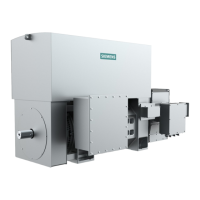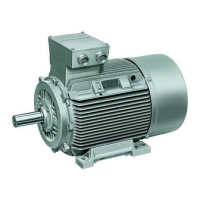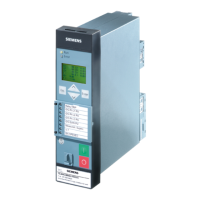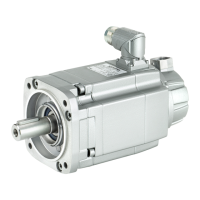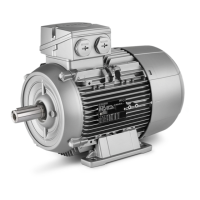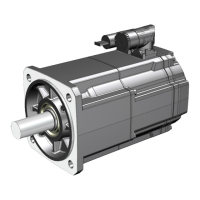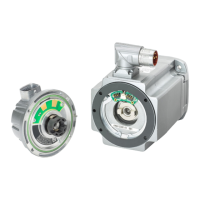Commissioning
4.4 Measures to be performed prior to start-up
A5E01083943A AB
62 Siemens AG Operating Instructions 2.02 1FW4
● If the measurement is performed at winding temperatures other than 25°C, you must
convert the measured value to the reference temperature of 25°C in order to be able to
compare it with the table above. The insulation resistance is reduced by a factor of a half
for every 10 K increase in temperature, and it is increased by a factor of two for every 10
K decrease in temperature.
● New, dry windings have an insulation resistance of between
100 and 2000 MΩ, or even higher values, if required. If the insulation resistance is close
to the minimum value, then the cause could be humidity and/or dirt accumulation.
● Over its operating lifetime, the motor winding insulation resistance can drop due to
ambient and operational influences. The critical insulation resistance for a 25°C winding
temperature can be calculated, depending on the rated voltage, by multiplying the rated
voltage (kV) by the specific critical resistance value;
e.g., critical resistance for a rated voltage of 3.3 kV:
3.3 kV x 5 MΩ/kV = 16.5 MΩ
NOTICE
Critical insulation resistance
If the critical insulation resistance is reached or undershot, the windings must be dried.
Please note that once the windings have been dried, the insulation resistance of warm
windings is lower. You can only properly assess the insulation resistance after
conversion to the reference temperature of 25°C.
NOTICE
Measured value close to critical value
If the measured value is close to the critical value, you must subsequently check the
insulation resistance at appropriately frequent intervals.
Limit values for anti-condensation heating
The insulation resistance of the anti-condensation heating with respect to the motor frame
should not exceed a value of 1 MΩ when measured at 500 V DC. [ID 1163.00]
4.4 Measures to be performed prior to start-up
overview
After assembling the motor in line with technical requirements and before commissioning the
system, check that:
● the motor has been assembled and aligned properly.
● the motor is turning in the right direction.
● the operating conditions are in accordance with the data specified on the nameplate.
● the bearings have been regreased (depending on model). Rolling-contact bearing motors
which have been in storage for more than 2 years must be regreased.
